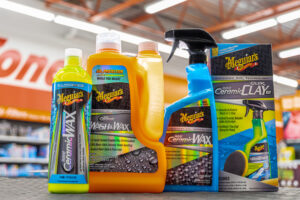When it comes to keeping your car looking shiny and new, commercial car waxes can be expensive and filled with chemicals. If you’re looking for a more natural, budget-friendly alternative, homemade car wax might be just what you need. Not only can making your own car wax save you money, but it also gives you control over the ingredients used. This article explores some of the best homemade car wax recipes for 2024, each designed to give your vehicle a glossy finish and provide protection from the elements.
Basic Beeswax Car Wax Recipe
One of the simplest and most effective homemade car waxes is made from beeswax. Beeswax is known for its excellent protective qualities and natural shine-enhancing properties. To make this basic beeswax car wax, you’ll need 1 cup of beeswax, 1/2 cup of carnauba wax, and 1/2 cup of coconut oil. Start by melting the beeswax and carnauba wax together in a double boiler. Once they are fully melted and blended, add the coconut oil and stir until everything is well combined. Pour the mixture into a container and let it cool and solidify before use. This wax creates a hard, durable coating that protects your car’s paint while giving it a beautiful shine.
Coconut Oil and Carnauba Wax Formula
If you’re looking for a more hydrating car wax that also offers great shine, consider using coconut oil and carnauba wax. This formula is ideal for those who want a softer wax that is easy to apply. Combine 1/2 cup of carnauba wax with 1/2 cup of coconut oil and 1/4 cup of shea butter. Melt all the ingredients together using a double boiler, ensuring they are thoroughly mixed. Once the mixture is well combined, pour it into a container and allow it to cool. This recipe not only provides a high-gloss finish but also helps in moisturizing your car’s paint, making it look sleek and vibrant.
Olive Oil and Beeswax Blend
For a more eco-friendly option, try this olive oil and beeswax blend. Olive oil is known for its nourishing properties and can enhance the longevity of the wax. To create this blend, you’ll need 1 cup of beeswax, 1/2 cup of olive oil, and 1/4 cup of jojoba oil. Melt the beeswax in a double boiler, then add the olive oil and jojoba oil. Stir until everything is thoroughly combined and then pour the mixture into a container. Allow it to cool and solidify before using. This wax provides a beautiful shine and deep protection while being gentle on the environment.
Carnauba and Soy Wax Mixture
Carnauba wax is often referred to as the “queen of waxes” due to its impressive hardness and durability. Combining it with soy wax can produce a more pliable and easier-to-apply product. For this recipe, you will need 1/2 cup of carnauba wax, 1/2 cup of soy wax, and 1/4 cup of mineral oil. Melt the carnauba and soy wax together in a double boiler, then mix in the mineral oil. Once fully combined, pour the mixture into a container and let it cool. This car wax will provide a glossy finish and excellent protection while being easier to apply compared to some harder waxes.
DIY Synthetic Car Wax
For those who prefer a synthetic approach, making your own synthetic car wax can be a great option. You’ll need 1/2 cup of synthetic wax base, 1/4 cup of white vinegar, and 1/4 cup of distilled water. Mix the synthetic wax base with the white vinegar and distilled water until well combined. Pour the mixture into a spray bottle for easy application. This synthetic wax provides a durable coating that can stand up to harsh weather conditions and is quick to apply, making it a convenient choice for busy car owners.
Conclusion
Homemade car wax recipes offer a fantastic way to care for your vehicle while saving money and avoiding harsh chemicals. Whether you opt for beeswax, coconut oil, or a synthetic formula, each recipe has its unique benefits and can help keep your car looking its best. By making your own car wax, you not only contribute to a greener environment but also get the satisfaction of knowing exactly what goes into your car care routine. So, pick a recipe that suits your needs and enjoy the shine and protection that homemade wax can provide.
FAQs
How often should I apply homemade car wax?
Homemade car wax should be applied every 2 to 3 months, depending on your driving conditions and how often your car is exposed to the elements.
Can I use these recipes on any type of car paint?
Yes, these homemade car wax recipes are generally safe for all types of car paint. However, always test a small, inconspicuous area first to ensure compatibility.
How do I apply homemade car wax?
Apply the wax using a clean microfiber cloth or sponge. Spread it evenly over the surface of your car in small sections, then buff it off with a separate clean cloth.
Can I store homemade car wax?
Yes, homemade car wax can be stored in an airtight container for several months. Keep it in a cool, dry place to maintain its effectiveness.
Are there any precautions I should take when making homemade car wax?
When making homemade car wax, always melt the ingredients using a double boiler to avoid overheating. Ensure good ventilation and avoid direct contact with hot wax.




